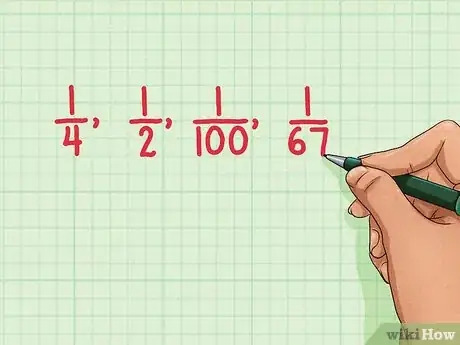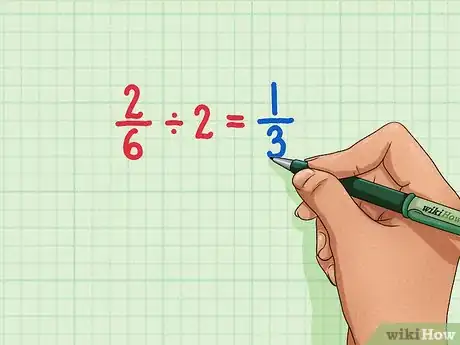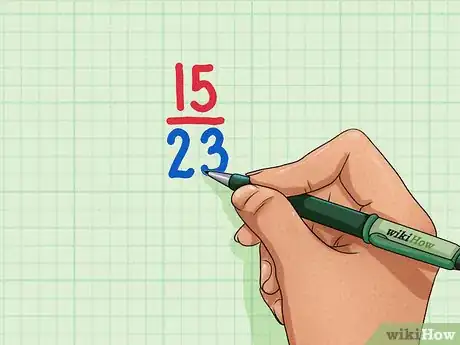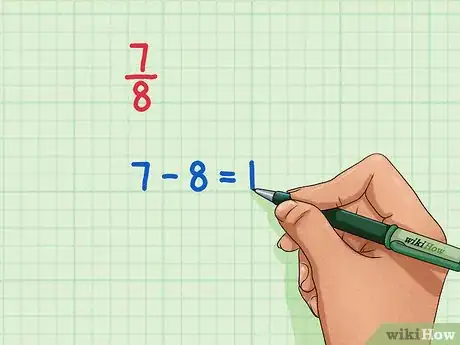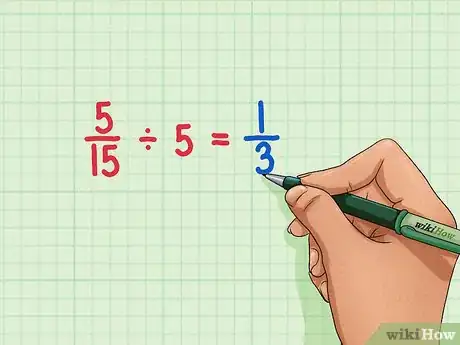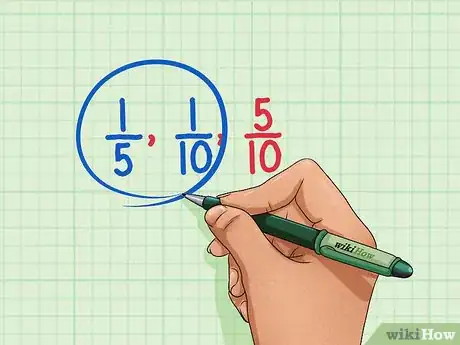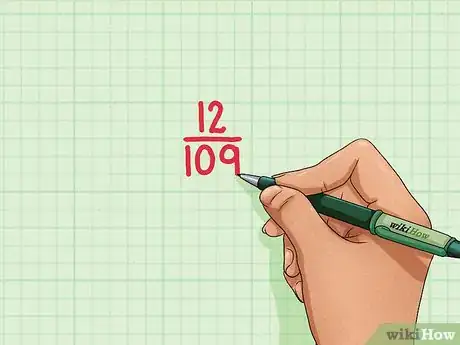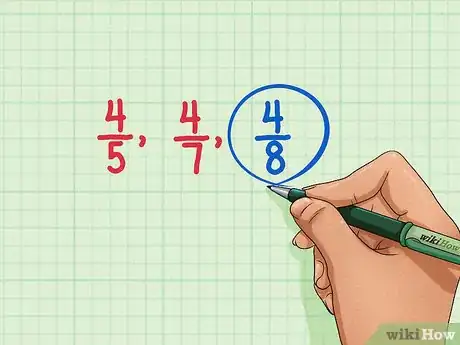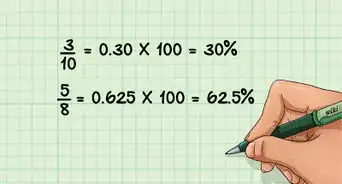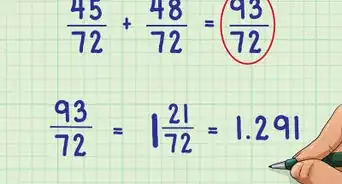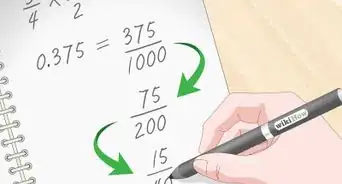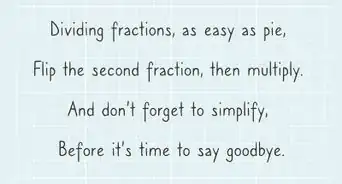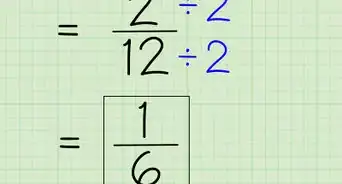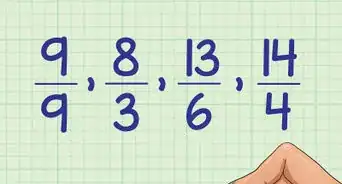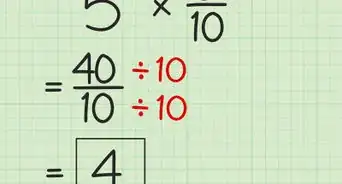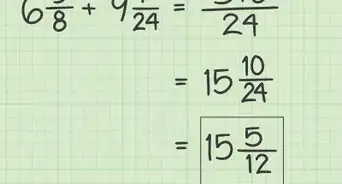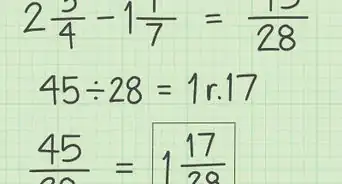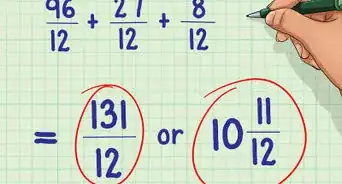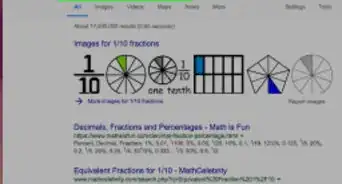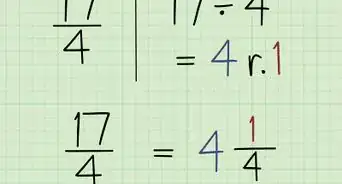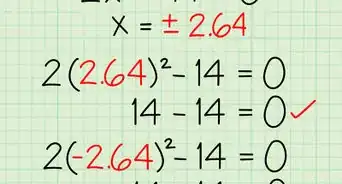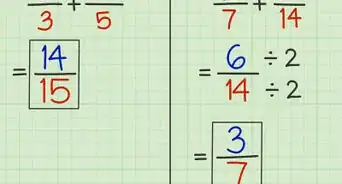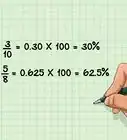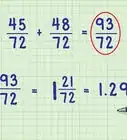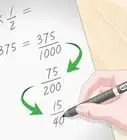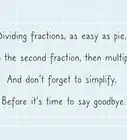This article was co-authored by David Jia. David Jia is an Academic Tutor and the Founder of LA Math Tutoring, a private tutoring company based in Los Angeles, California. With over 10 years of teaching experience, David works with students of all ages and grades in various subjects, as well as college admissions counseling and test preparation for the SAT, ACT, ISEE, and more. After attaining a perfect 800 math score and a 690 English score on the SAT, David was awarded the Dickinson Scholarship from the University of Miami, where he graduated with a Bachelor’s degree in Business Administration. Additionally, David has worked as an instructor for online videos for textbook companies such as Larson Texts, Big Ideas Learning, and Big Ideas Math.
This article has been viewed 38,415 times.
Math problems will often ask you to reduce proper fractions (a fraction with a larger denominator than numerator) to their simplest form. Sometimes you may waste time trying to simplify fractions that cannot be further reduced. Using certain shortcuts, you can determine whether a fraction is reduced without completing any calculations.
Steps
Identifying Reduced Fractions
-
1Look for unit fractions. A unit fraction is one that has 1 as the numerator. Unit fractions cannot be simplified any further.[1]
- For example, , , , and are all simplified, because they have 1 as the numerator.
-
2Determine whether the denominator is a multiple of the numerator. One way to reduce a fraction is to divide by a greatest common factor.[2] If the denominator is a multiple of the numerator, that means each can be divided by a greatest common factor (the numerator). These types of fractions can be reduced to a unit fraction.
- For example, is not simplified, because 6 is a multiple of 2. The numerator and denominator can still be divided by a common factor of 2, simplifying the fraction to .
- The fraction is simplified, because 5 is not a multiple of 2.
Advertisement -
3Determine whether the denominator is a prime number. A prime number is a number that is only divisible by itself and 1.[3] If the denominator is prime, the fraction cannot be simplified any further. This is because the denominator can only be divided by itself, so whatever number appears in the numerator will not have a common factor. For more information about prime numbers, you can read Check if a Number Is Prime.
- For example, is simplified, because 23 is a prime number. The only factors of 23 are 23 and 1, so it is impossible to find a greatest common factor you can use to simplify the numerator and denominator. (If the numerator were 1, it would be a unit fraction and thus already simplified. If the numerator were 23, the fraction would equal 1.)
-
4Find the difference between the numerator and the denominator. If the difference is 1, then the fraction is simplified.[4]
- For example, you know that is simplified, because
-
5Reduce Fractions that aren't already simplified. A fraction can be simplified by looking for the largest number that can be evenly divided into the numerator and denominator, and then dividing each by that number.[5]
- For example, if you are reducing , divide the numerator and denominator by 5. This will give you , which you know cannot be reduced further because it is a unit fraction.
Using Shortcuts in Context
-
1Determine which of the following fractions are in their reduced form.[6] Do not make any calculations: , , .
- The fractions and are in their reduced, or simplified, form, because each is a unit fraction, with 1 as the numerator. You should know that is not simplified, because 10 is a multiple of 5.
-
2Consider the following problem. Franny says that is a simplified fraction. Without making any calculations, how do you know she is correct?
- Since 109 is a prime number, you can tell that the fraction is simplified. 109 is only divisible by 109 and 1, so it shares no common factors with 12.
-
3Determine which fraction is NOT simplified. Do not make any calculations: , ,
- Since , you know that is simplified. Since 7 is a prime number, you know that is simplified. Since 8 is a multiple of 4, you know that is NOT simplified.
Expert Q&A
-
QuestionHow do I simplify a proper fraction?
 David JiaDavid Jia is an Academic Tutor and the Founder of LA Math Tutoring, a private tutoring company based in Los Angeles, California. With over 10 years of teaching experience, David works with students of all ages and grades in various subjects, as well as college admissions counseling and test preparation for the SAT, ACT, ISEE, and more. After attaining a perfect 800 math score and a 690 English score on the SAT, David was awarded the Dickinson Scholarship from the University of Miami, where he graduated with a Bachelor’s degree in Business Administration. Additionally, David has worked as an instructor for online videos for textbook companies such as Larson Texts, Big Ideas Learning, and Big Ideas Math.
David JiaDavid Jia is an Academic Tutor and the Founder of LA Math Tutoring, a private tutoring company based in Los Angeles, California. With over 10 years of teaching experience, David works with students of all ages and grades in various subjects, as well as college admissions counseling and test preparation for the SAT, ACT, ISEE, and more. After attaining a perfect 800 math score and a 690 English score on the SAT, David was awarded the Dickinson Scholarship from the University of Miami, where he graduated with a Bachelor’s degree in Business Administration. Additionally, David has worked as an instructor for online videos for textbook companies such as Larson Texts, Big Ideas Learning, and Big Ideas Math.
Academic Tutor Look for the largest common number that evenly divides with the top and bottom numbers of the fraction.
Look for the largest common number that evenly divides with the top and bottom numbers of the fraction. -
QuestionHow can I reciprocal -2.45?
 Community AnswerFirst, write -2.45 as an unsimplified fraction -245/100. The reciprocal of that is -100/245. Depending on what form you want the answer in, you can either leave it as -100/245, simplify the fraction to -20/49, or long divide it to get a decimal -0.408.
Community AnswerFirst, write -2.45 as an unsimplified fraction -245/100. The reciprocal of that is -100/245. Depending on what form you want the answer in, you can either leave it as -100/245, simplify the fraction to -20/49, or long divide it to get a decimal -0.408. -
QuestionIs 0.919191 a fraction
 DonaganTop AnswererNo, it's a decimal. However, it's the equivalent of the fraction 23/25.
DonaganTop AnswererNo, it's a decimal. However, it's the equivalent of the fraction 23/25.
References
- ↑ https://www.mathsisfun.com/definitions/unit-fraction.html
- ↑ https://www.mathsisfun.com/simplifying-fractions.html
- ↑ http://www.mathsisfun.com/definitions/prime-number.html
- ↑ https://courses.lumenlearning.com/mathforliberalartscorequisite/chapter/simplifying-fractions/
- ↑ David Jia. Academic Tutor. Expert Interview. 7 January 2021.
- ↑ https://www.cuemath.com/numbers/reduce-fractions/
